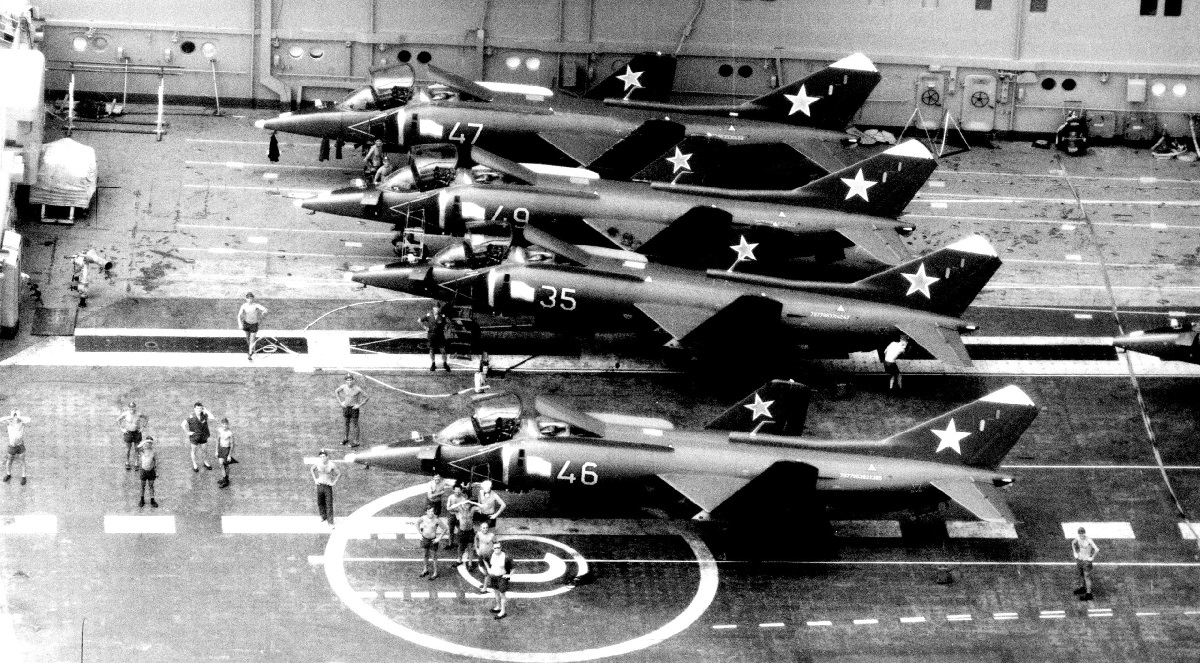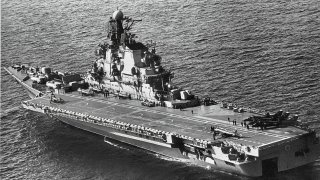Yak-38: This Might Be Russia's Worst Fighter Jet Ever
During the Cold War, the aviation race led to the creation of vertical/short-takeoff and landing (V/STOL) aircraft, with the UK's Harrier becoming a standout. In response, the USSR developed the Yakovlev Yak-38, designed to mimic the Harrier's capabilities but with significant differences.
Summary: During the Cold War, the aviation race led to the creation of vertical/short-takeoff and landing (V/STOL) aircraft, with the UK's Harrier becoming a standout. In response, the USSR developed the Yakovlev Yak-38, designed to mimic the Harrier's capabilities but with significant differences. The Yak-38, which first flew in 1971, lacked the payload capacity and advanced radar of the Harrier, limiting its effectiveness as a defense fighter. Despite deployment on Soviet carriers, the Yak-38 suffered from design flaws and did not survive post-USSR, marking the Harrier as the era's only truly successful V/STOL design.
The Rise and Fall of the Soviet Yak-38: A Cold War V/STOL Aircraft
As the aviation arms race sped forward during the Cold War, the United Kingdom introduced the Harrier, its jet-powered attack airframe capable of vertical/short-takeoff and landing operations, or V/STOL.
The USSR wanted its own jump jet, and developed the Yakovlev Yak-38. The platform was meant to mimic the Harrier, but the Yak-38 did not survive the collapse of the Soviet Union.
Ultimately, the Harrier would become the only truly successful Cold War-era V/STOL design. The jump jet was designed to eliminate the need for vulnerable runways in combat. Since airframes of this kind can take off and land vertically from a single position, they require less space to operate.
Introducing the Yak-38
Eager to copy the United Kingdom’s Harrier design, Soviet engineers got to work on their own variant. The A.S. Yakovlev Design Bureau sketched the first drawings of the potential airframe, equipped with a pair of R27-300 engines.
While the Yak-38 was developed from the land-based Yak-36, the two platforms had little in common. Keeping things simple, engineers decided to limit the Yak-38’s speed to Mach 0.95. The resulting prototype appeared similar to the British Harrier, but with major internal differences.
Specs & Capabilities
According to Military Factory, the Yak-38 took its maiden flight in early 1971. The computer-controlled engine system incorporated on the Yak-38 was designed to provide the proper thrust to ensure that the airframe would stay aloft.
During vertical flight, the lift jets positioned behind the pilot’s seat were exposed while the engine’s exhaust ports balanced out lift power.
Perhaps the greatest difference between the British Harrier and its Soviet counterpart was payload.
The Yak-38 possessed no radar, minimizing its potential as a fleet defense fighter. Additionally, its air-to-air armament was confined to tiny R-60 heat-seeking missiles with a range of five miles.

The Yak-38 could carry only about 25% of what the Harrier could in terms of bombs or unguided rockets.
Operational History
The Yak-38 was first deployed with the Minsk warship in 1979. In 1982, the USSR’s third Kiev-class carrier, the Novorossiysk, was commissioned. Now that the V/STOL-capable aircraft was well practiced, it could be used to help the new carrier join the Pacific Fleet.
That same year marked the first time a Yak-38 intercepted U.S. aircraft while armed with missiles. The Soviet jet soon underwent an overhaul – it was modified with the Tumansky R-28 V-300 and Rybinsk RD-38 engine combination.
While this add-on improved the Yak-38’s effectiveness, the platform overall suffered from serious design flaws that prevented its preservation following the demise of the USSR.
Limited operational ranges, payload-carrying capability, and performance shortened the Yak-38’s service life.
About the Author: Maya Carlin
Maya Carlin, National Security Writer with The National Interest, is an analyst with the Center for Security Policy and a former Anna Sobol Levy Fellow at IDC Herzliya in Israel. She has by-lines in many publications, including The National Interest, Jerusalem Post, and Times of Israel. You can follow her on Twitter: @MayaCarlin.


